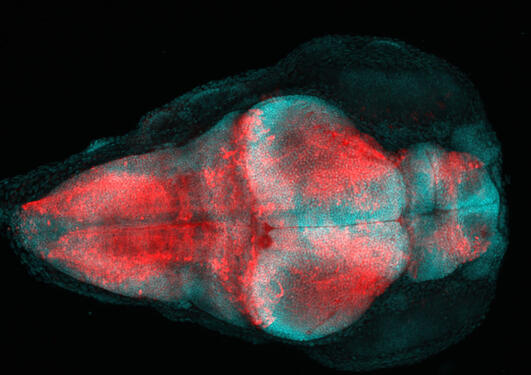
Our research is focused on mechanisms of how cellular stress leads to cell death and the ability of cells to protect themselves and neighboring cells from cell death. We are using zebrafish as an in vivo model to study cell death and protective mechanisms. Zebrafish models are emerging as a highly used model for human diseases. The development and function of organs are similar to humans and disease-related human genes have functional orthologs in zebrafish. Image: Zebrafish brain with neuronal mitochondria in red (Tg(NBTb-mitoDsRed2))
Research projects:
Function of the Parkinson´s disease-related protein DJ-1
Balancing the cellular redox state is important for all cell types, but particularly crucial in neurons, as an imbalance here is believed to be the causative factor for several neurodegenerative diseases, including Alzheimers and Parkinson´s disease. A number of studies point to the Parkinson´s disease-related protein DJ-1 as an important regulator of the cellular redox balance. Mutations leading to DJ-1 dysfunction are implicated in Parkinson´s disease, in which dopaminergic neurons of the substantia nigra die resulting in movement disabilities. We use transgenic zebrafish lines with cell specific DJ-1 expression to study the cell stress protective mechanism of DJ-1.
